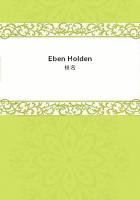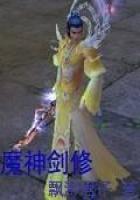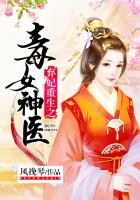THE WIDENING SUFFRAGE STREAM
In my chapters on Miss Anthony I bridged the twenty years between 1886 and 1906, omitting many of the stirring suffrage events of that long period, in my desire to concentrate on those which most vitally concerned her. I must now retrace my steps along the widening suffrage stream and de- s cribe, consecutively at least, and as fully as these incomplete reminiscences will permit, other inci- d ents that occurred on its banks.
Of these the most important was the union in 1889 of the two great suffrage societies--the Ameri- c an Association, of which Lucy Stone was the presi- d ent, and the National Association, headed by Susan B. Anthony and Elizabeth Cady Stanton. At a convention held in Washington these societies were merged as The National American Woman Suffrage Association--the name our association still bears-- a nd Mrs. Stanton was elected president. She was then nearly eighty and past active work, but she made a wonderful presiding officer at our subsequent meetings, and she was as picturesque as she was efficient.
Miss Anthony, who had an immense admiration for her and a great personal pride in her, always escorted her to the capital, and, having worked her utmost to make the meeting a success, invariably gave Mrs. Stanton credit for all that was accom- p lished. She often said that Mrs. Stanton was the brains of the new association, while she herself was merely its hands and feet; but in truth the two women worked marvelously together, for Mrs.
Stanton was a master of words and could write and speak to perfection of the things Susan B. Anthony saw and felt but could not herself express. Usually Miss Anthony went to Mrs. Stanton's house and took charge of it while she stimulated the venerable president to the writing of her annual address.
Then, at the subsequent convention, she would listen to the report with as much delight and pleasure as if each word of it had been new to her. Even after Mrs. Stanton's resignation from the presidency-- a t the end, I think, of three years--and Miss An- t hony's election as her successor, ``Aunt Susan'' still went to her old friend whenever an important reso- l ution was to be written, and Mrs. Stanton loyally drafted it for her.
Mrs. Stanton was the most brilliant conversa- t ionalist I have ever known; and the best talk I h ave heard anywhere was that to which I used to listen in the home of Mrs. Eliza Wright Osborne, in Auburn, New York, when Mrs. Stanton, Susan B. Anthony, Emily Howland, Elizabeth Smith Miller, Ida Husted Harper, Miss Mills, and I were gathered there for our occasional week-end visits.
Mrs. Osborne inherited her suffrage sympathies, for she was the daughter of Martha Wright, who, with Mrs. Stanton and Lucretia Mott, called the first suffrage convention in Seneca Falls, New York. I m ust add in passing that her son, Thomas Mott Osborne, who is doing such admirable work in prison reform at Sing Sing, has shown himself worthy of the gifted and high-minded mother who gave him to the world.
Most of the conversation in Mrs. Osborne's home was contributed by Mrs. Stanton and Miss Anthony, while the rest of us sat, as it were, at their feet.
Many human and feminine touches brightened the lofty discussions that were constantly going on, and the varied characteristics of our leaders cropped up in amusing fashion. Mrs. Stanton, for example, was rarely accurate in giving figures or dates, while Miss Anthony was always very exact in such matters.
She frequently corrected Mrs. Stanton's statements, and Mrs. Stanton usually took the interruption in the best possible spirit, promptly admitting that ``Aunt Susan'' knew best. On one occasion I re- c all, however, she held fast to her opinion that she was right as to the month in which a certain inci- d ent had occurred.
``No, Susan,'' she insisted, ``you're wrong for once. I remember perfectly when that happened, for it was at the time I was beginning to wean Harriet.''
Aunt Susan, though somewhat staggered by the force of this testimony, still maintained that Mrs.
Stanton must be mistaken, whereupon the latter repeated, in exasperation, ``I tell you it happened when I was weaning Harriet.'' And she added, scornfully, ``What event have you got to reckon from?''
Miss Anthony meekly subsided.
Mrs. Stanton had wonderful blue eyes, which held to the end of her life an expression of eternal youth. During our conventions she usually took a little nap in the afternoon, and when she awoke her blue eyes always had an expression of pleased and innocent surprise, as if she were gazing on the world for the first time--the round, unwinking, interested look a baby's eyes have when something attractive is held up before them.
Let me give in a paragraph, before I swing off into the bypaths that always allure me, the consecutive suffrage events of the past quarter of a century.
Having done this, I can dwell on each as casually as I choose, for it is possible to describe only a few incidents here and there; and I shall not be depart- i ng from the story of my life, for my life had become merged in the suffrage cause.
Of the preliminary suffrage campaigns in Kansas, made in company with ``Aunt Susan,'' I have al- r eady written, and it remains only to say that dur- i ng the second Kansas campaign yellow was adopted as the suffrage color. In 1890, '92, and '93 we again worked in Kansas and in South Dakota, with such indefatigable and brilliant speakers as Mrs. Catt (to whose efforts also were largely due the winning of Colorado in '93), Mrs. Laura Johns of Kansas, Mrs. Julia Nelson, Henry B. Blackwell, Dr. Helen V. Putnam of Dakota, Mrs. Emma Smith DeVoe, Rev. Olympia Browne of Wisconsin, and Dr. Mary Seymour Howell of New York. In '94, '95, and '96 s pecial efforts were devoted to Idaho, Utah, Cali- f ornia, and Washington, and from then on our campaigns were waged steadily in the Western states.















